
Italian Americans at Bat is one step closer to San Diego’s Convivio Center in Little Italy.

in Italian Americans at Bat.
Italian Americans at Bat: From Sand Lots to the
Major Leagues weaves together ideas, stories and
statistics to depict the Italian American experience.
There is a timeline of the years 1845 to 2012, which
includes the history of baseball and Italian immigration into the United States–and most importantly when those two histories intersect. The exhibition highlights several decades: the early days of redefining cultural stereotypes, transcending national barriers in the 30s and 40s, improbable triumphs of the 50s, 60s and 70s, the pride of the modern era, and a dominant presence in the Hall of Fame. Joe DiMaggio is the coveted star of the exhibition, and his 56-game hitting streak in 1941 is accented by text panels which document each hit recorded in the “Dimag-o-Log” that the SF Chronicle ran in “the Sporting Green” every day. Joe DiMaggio, along with his brothers–Dom and Vince, Tony Lazzeri, Frank Crosetti, Babe Pinelli, Ernie Lombardi, Rugger Ardizoia, Billy Martin and Jim Fregosi are among the celebrated Italian American players. 


Jim Fregosi
Exclusive Interview: Former Team Italy/MLB pitcher Dan Serafini at home in the Bullpen

While pitching for Team Italy in the 2013 World Baseball Classic, lefty Dan Serafini began his 22nd season playing as a pro in America, Canada, Japan, and Mexico. With 104 MLB appearances for the Twins, Cubs, Pirates, Padres, Reds, and Rockies under his belt, the bullpen has always been a second home for the Twins’ first-round draft pick of 1992. So when when it came time for the San Francisco-born Serafini to choose an appropriate name for his new sports bar located close to the family home at 5215 Vista Blvd. in Sparks, Nevada, it was simply a case of serendipity that he call it The Bullpen at Aspen Glen.
The bullpen at aspen glen come drink kids pic.twitter.com/RxiOO0c8GJ
— Danny serafini (@dannyserafini) June 16, 2013

He was the 1992 WCAL, County and Peninsula Co-Player of the Year in addition to being named the San Mateo Times County Athlete of the Year.
 Roberto: San Mateo’s Junipero Serra High School has been known to produce their share of athletes including Barry Bonds and many sports legends. While covering the Australian Baseball League, I learned that Brisbane Bandits’ Chuck Lofgren pitched at Serra High School. Having also played there, how does it feel being surrounded by a strong Bay Area professional athlete fraternity at Serra?
Roberto: San Mateo’s Junipero Serra High School has been known to produce their share of athletes including Barry Bonds and many sports legends. While covering the Australian Baseball League, I learned that Brisbane Bandits’ Chuck Lofgren pitched at Serra High School. Having also played there, how does it feel being surrounded by a strong Bay Area professional athlete fraternity at Serra?
Dan Serafini: Serra High School is a great baseball facility and just a great school to go to. We had a lot of great players: Jim Fregosi, Dan Frisella…even some football players: Lynn Swann, Tom Brady. We have quite an athletic history. Some really good baseball players like Gregg Jeffries have come out of my school.
Roberto: Team Italy slugger Chris Colabello followed the same minor league path to MLB playing for Double-A New Britain RockCats. While you played there, you were named to the 1995 Eastern League All-Star team after going 12-9 with a 3.37 ERA.
Dan Serafini: That was a long time ago. I can barely even remember that. At New Britain, Chris got to play in the new stadium. I played in the old Beehive Stadium, which was more like a high school stadium with a trailer park locker room. I had a good year that year, and it got me a call up to Triple-A before the season was over.
Dan Serafini: It was not an easy team to pitch against for my first time playing in the big leagues, but it was a great memory. It was kind of funny.
The Twins wouldn’t let me into the locker room before the game. They didn’t want any animosity in the locker room because they hadn’t sent anyone down (to Triple-A) yet. I had to stay in a hotel and then on game day I got to show up right before the game started so that I could get ready to play. It wasn’t the greatest experience, but it was still a good experience. I got to the big leagues!
Roberto: At least it was a home game when you had to face the intimidating New York Yankees.
Dan Serafini: Although it was a home game in Minnesota, it was still intimidating. It was the New York Yankees—no matter where you are playing them, they are intimidating. Crowd factor definitely helped. I had the crowd on my side. I loved Minnesota. It was very supportive. I had a great time.
Roberto: You also had some more playing time with the Twins in 1997 and 1998. Was it rewarding for you?
Dan Serafini: It was. I got a very brief opportunity with the Twins. You know, going back from starting to the bullpen and starting and bullpen. I was never really able to fill my niche with the Twins. It was fun. It was rewarding. I’m a Major League Baseball player. There is nothing more rewarding than that.

Roberto: The Chicago Cubs bought your contract from the Twins on March 31, 1999. You made four starts for the Cubbies and put together a 3-2 record in 42 appearances with a 6.93 ERA.
Dan Serafini: The ERA was kind of high, but in my defense I actually pitched really well until the all-star break. I think I only had a 3 or 3.50 ERA up until the all-star break. Then my big
 league pitching coach, Marty DeMerritt, wanted me to become a left-handed specialist and drop down sidearm and start pitching sidearm only. So I did that, and it completely screwed up the whole rest of my season. I was walking everybody, giving up all kinds of hits and just all kind of happened. I can’t blame him. He was just trying to help me out, but to change your pitching mechanics in the middle of the season… It’s really hard to make an adjustment to big league hitters. It hurt me pretty good.
league pitching coach, Marty DeMerritt, wanted me to become a left-handed specialist and drop down sidearm and start pitching sidearm only. So I did that, and it completely screwed up the whole rest of my season. I was walking everybody, giving up all kinds of hits and just all kind of happened. I can’t blame him. He was just trying to help me out, but to change your pitching mechanics in the middle of the season… It’s really hard to make an adjustment to big league hitters. It hurt me pretty good.

Roberto: In the 1999 offseason you were traded to the San Diego Padres and pitched in three games in 2000. How did it feel to come back to your native California to play pro ball?
Dan Serafini: I was there for a long time. I didn’t get many opportunities.
I was mostly like a chess pawn. I just kind of sat in the dugout. I’d go a week straight without pitching in a game.
I didn’t get as many opportunities as
I would have liked to become a better player than I am today. San Diego is beautiful, and I’m from California–even though it’s Northern California where I’m from. Southern California is a beautiful place. I guess I had more fun there off the field than on the field.
 Roberto: After being traded to Pittsburgh and playing for the Nashville Sound, you had a 4-3 record with a 2.60 ERA before the call up to the Pirates on August 5, 2000 to make 11 starts.
Roberto: After being traded to Pittsburgh and playing for the Nashville Sound, you had a 4-3 record with a 2.60 ERA before the call up to the Pirates on August 5, 2000 to make 11 starts.
Dan Serafini: After getting traded from San Diego, I had a really good month or so in Nashville before getting called up.
I made my first start against the San Francisco Giants and won. That could have been probably my favorite time in the big leagues–to be going back home to my hometown and beating San Francisco in San Francisco. I had a pretty good season with Pittsburgh. They were struggling and in last place. I threw well for Pittsburgh. I just didn’t fit in their books.
 Roberto: Signing with San Francisco must have been a dream come true?
Roberto: Signing with San Francisco must have been a dream come true?
Dan Serafini: I didn’t get to stay with San Francisco too long. They signed me as a big league player, but they didn’t have a roster spot. I went to Triple-A for a little bit. I was making a substantial amount of money for a Triple-A player so when they couldn’t find a spot for me I got released about a month after
I signed. So I really didn’t get much of an opportunity with San Francisco.

Roberto: You quickly signed with the Mets and played for the 2001 Triple-A Norfolk Tides, where you posted 5-2 record with a 3.31 ERA in 31 games.
Dan Serafini: I didn’t waste anytime—maybe two days later signed with the Mets. Went to Triple-A and played there a little bit. I pitched pretty well, but got into an altercation with the GM. I ended up getting released and walking on over to the other clubhouse and signed up with Milwaukee that same day.
Roberto: You finished off the 2001 season pitching for the Brewers’ Triple-A affiliate Indianapolis Indians and posted a 2-2 record with a 5.96 ERA. However,
you chose to move on from Milwaukee
and were granted free agency in October, 2001. This opened the door for other opportunities, and you ended up signing a minor league deal with the Anaheim Angels. Was that another short-term engagement by design or a matter of being released? Please clear up all the misconceptions and incorrect information the media has picked up on to make you have to stand up for yourself and clarify.
Dan Serafini: Well you know the thing is…the media–they always say you were released, you were released, you were released. But for a lot of those teams I’ve actually picked the option for my release.
I didn’t get released. They would option me down to Triple-A, and I felt that I didn’t deserve to go to Triple-A. So for a lot of those assignments I chose not to go.

Roberto: After opting out of your contract with the Angels, you tried to make a comeback in late 2002 when you signed with the St. Louis Cardinals. You began at Triple-A Memphis, but then on April 21, 2003 you were released.
Dan Serafini: I knew what was going to happen because during the offseason I signed for such a high contract to go to Triple-A. I knew they were using me to fill a spot. So I knew as soon as no one came down from the big leagues or something that I was going to get released. 
Roberto: So you expected it?
Dan Serafini: I had signed for a substantial amount of money to go and play in Triple-A. Within the first month when Kevin Ohme was sent down from St. Louis, they got rid of me the next day. I pitched okay there, but it was really hard because I have always been a starter my whole career and I kept bouncing back and forth. I was going from bullpen to starting to bullpen and starting and never got into a rhythm.  So for all these teams I played for, I had really a tough time coming out of the bullpen and learning my routine and learning to play. Unfortunately, I didn’t really prove myself that well as well.
So for all these teams I played for, I had really a tough time coming out of the bullpen and learning my routine and learning to play. Unfortunately, I didn’t really prove myself that well as well.
Roberto: It sounds like the experiment on the big league level of being a sidearm specialist coming out of the bullpen went terribly wrong. It was not exactly the best training ground for trying something new.
Dan Serafini: No. The only chance I had to experiment was on the big stage, which is really difficult if you are not physically or mentally prepared for those things. I wasn’t…I was only 21 or 22 at the time. It was a difficult road for me–that’s for sure!
 Roberto: Did being disillusioned with American pro ball inspire you to head south to Mexico?
Roberto: Did being disillusioned with American pro ball inspire you to head south to Mexico?
Dan Serafini: Yes, I played my first year in 2002. It was winter ball for Mazatlan. I had a great manager and a really fun time there. And they said if I ever had a problem in summer that I was more than welcome to play in Mexico. So after that St. Louis series, I went in 2003 to go play summer ball in Mexico.
Roberto: The Cincinnati Reds noticed and purchased your contract on August 25, 2003.
Dan Serafini: I ended up winning the ERA title. I set the record for the most wins in a row that season. I was a starter. I got back in the my swing of things. I got my mechanics back and pitched really well. I got called up and went straight to the big leagues in Cincinnati.

Roberto: On August 26, 2003, you started against the Milwaukee Brewers.
Dan Serafini: I believe I also started in a game versus St. Louis. Then I went back to the bullpen after I told the GM
I wouldn’t go to the bullpen and that I would only start. Because I had already 130 innings pitched in Mexico, I was tired and said I didn’t want to get up and down every day out of the bullpen. After I said I only wanted to start, the GM said that was exactly what I was summoned there to do–to start for Danny Graves because he got hurt.
 So I went there, got two starts and they stuck me in the bullpen. It was a disappointment. I know it’s a business, and I just need to man up and do it. It was just hard. I talked to Bobby Valentine in 2004, and he asked me to go down to Vegas and throw a bullpen for somebody to try out for the team he managed in Japan. I went out there and tried out for the Chiba Lotte Marines. I was hurt at the time. I had a broken collar bone because
So I went there, got two starts and they stuck me in the bullpen. It was a disappointment. I know it’s a business, and I just need to man up and do it. It was just hard. I talked to Bobby Valentine in 2004, and he asked me to go down to Vegas and throw a bullpen for somebody to try out for the team he managed in Japan. I went out there and tried out for the Chiba Lotte Marines. I was hurt at the time. I had a broken collar bone because
I crashed on a motorcycle messing around with my friends. Despite being injured, I still got a good enough report from the try out to go to Japan.
 Roberto:: After being granted free agency and playing for Bobby Valentine’s Chiba Lotte Marines in 2004 and 2005 as well as the Orix Buffaloes in 2006 and 2007, were you treated with a little bit more respect in Japan?
Roberto:: After being granted free agency and playing for Bobby Valentine’s Chiba Lotte Marines in 2004 and 2005 as well as the Orix Buffaloes in 2006 and 2007, were you treated with a little bit more respect in Japan?
Dan Serafini: It was really rewarding because I actually got treated like a player that I was. Japan did nothing but give me the highest respect. Bobby Valentine did nothing but give me the highest respect. He kept me on a routine for the full season, and I had a really good career in Japan. I still talk to Bobby off and on the internet. I was happy to see him as an Ambassador for the 2013 World Baseball Classic.
 Roberto: Did you follow all the drama that surrounded Bobby Valentine last year when he managed the Boston Red Sox?
Roberto: Did you follow all the drama that surrounded Bobby Valentine last year when he managed the Boston Red Sox?
Dan Serafini: I did. In fact, before the season began I called him and asked him for a job to see if I could get a Triple-A job or a coaching/ player job. His hands were tied. He said that he couldn’t make any moves. But I followed him and saw all the disappointing articles about him and stuff from players that couldn’t handle his attitude. I thought it was ridiculous. He’s the smartest guy in baseball–hands down. He may want a little more attention than he deserves, but that’s his character.
If people don’t like it, they try to crucify him. He’s a very good man!

Roberto: It’s too bad he was the scapegoat for the Red Sox.
Dan Serafini: It really was. I know he’s done some things in his past that has rubbed people the wrong way–and we all have. It’s just the way different personalities go–especially when you have a bunch of superstars in the one locker room. It’s almost like you have to walk on eggshells around these people because they’re more sensitive than most people that are not superstars.
Roberto: When a player digs into the batter’s box and gives you a long grimacing stare, is your best response and message to the hitter simply the delivery of your next pitch?
Dan Serafini: Yes, definitely–without a doubt. There’s got to be respect both ways. For me, I’ve always been tired of being called a cheater or having a dismal career by what some reporters have said. I feel like I have fought the longest just like Bobby Valentine did to get my career to where it is right now.
 Roberto: You signed a deal with the Colorado Rockies in 2007 and pitched on September 7th against the San Francisco Giants.
Roberto: You signed a deal with the Colorado Rockies in 2007 and pitched on September 7th against the San Francisco Giants.
Dan Serafini: It was a great feeling. I was excited. It was tough because I had just come back from Japan. I broke my hand in Japan, and they decided to release me at the last quarter of the season just because they were not going to use me anymore and had no chance of the playoffs. So they sent me home, and
I signed with Colorado. I got called up to the big leagues a couple weeks later and after four years of not having seen a major league game got to pitch to my first batter–Barry Bonds! 
Roberto: What were the odds of you facing one of baseball’s most feared hitters in your MLB comeback attempt?
Dan Serafini: It was pretty interesting. I had some butterflies.
Roberto: How did you sustain your hand injury overseas?
Dan Serafini: That happened at a game in Japan. I was pitching and lost my footing in the bullpen. It was on my glove hand.
I kind of slipped and fell over. I used my hand to stabilize myself from falling over, and I broke my ring finger, pinky and a couple bones in the middle of my hand.
Roberto: In Japan you also sustained an achilles injury which required medication to help with the healing process and eventually led to a positive test for MLB banned substances when you signed with the Rockies in 2007.
Dan Serafini: I actually got a serious injury and had surgery on my achilles. When I came back from Chiba Lotte, I tore my achilles tendon in the year we won the championship. I signed a two-year contract with the Orix Buffaloes for a substantial amount. My leg with in a cast for four months so they were shooting it up all year long trying to get it balanced back.
After my first year at Orix, I wasn’t throwing very well because my body was so out of balance that it started hurting my shoulder and back. So they told me to just take the rest of the year off and come back for 2007. I was still having problems with my leg and the way my muscles were firing in 2007. So again a doctor was giving me a medication that I didn’t think much of because I passed all of my drug tests and Olympic testing in Japan. So I didn’t even think twice about it. And that’s what it was when I got tested on the last day of the season with Colorado. It was still in my system, and I got busted for it.


Roberto: It looks like MLB used you as a scapegoat to fill their 2007 quota and deter players from using banned substances.
Dan Serafini: Yes, I think so. I mean because I tried to fight it.
I had to do a lot of things for my defense. I had to get the doctor from Japan to come and fly to New York to testify for me in court. He wanted $500,000 to do it because it would give Japan a bad name since I never failed a test in Japan. So I said, ‘Screw it, I’ll take the 50-game suspension and wear it for now.’ I didn’t think that it would be that bad, but Colorado didn’t sign me back.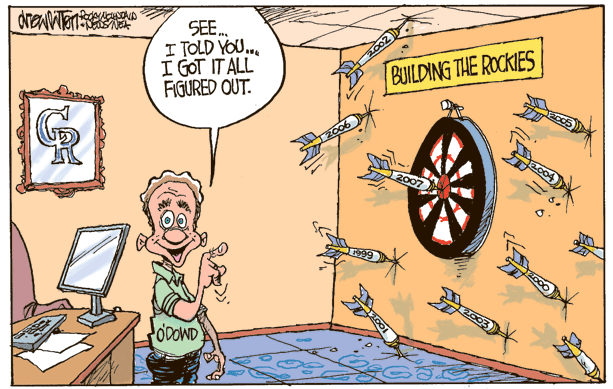
 The GM at the time, Dan O’Dowd, didn’t give me my National League Championship ring. They gave me my playoff share because I was there for a short time, but they didn’t give me a ring because they were disgraced by the fact that I was a cheater and stuff like that. It was just bad. An unnamed journalist tried to say that I was trying to respark my dismal career. My response was like: ‘What’s so dismal about making over 10 million dollars?’ I don’t think that’s too dismal…
The GM at the time, Dan O’Dowd, didn’t give me my National League Championship ring. They gave me my playoff share because I was there for a short time, but they didn’t give me a ring because they were disgraced by the fact that I was a cheater and stuff like that. It was just bad. An unnamed journalist tried to say that I was trying to respark my dismal career. My response was like: ‘What’s so dismal about making over 10 million dollars?’ I don’t think that’s too dismal…
Roberto: If a man can’t look at me in the eye and share his theory to my face without the facts in hand—and instead choose to hide behind a computer desk in favor of meeting publishing deadlines, then it’s not news worthy in my book.
Dan Serafini: Exactly. You know it’s like so many people just wrote stories about me that never even asked me the details or took the details out. Even Tom Verducci and things he wrote in my 
article. I said so many things to balance and justify the difference between cheating and other kinds of uses of certain PEDs or whatever. And they don’t want to listen to that, but everybody wants to be negative and listen in to CNN nowadays.
Roberto: Not a lot of players want to comment in fear of being blackballed. But you are not afraid to speak your mind and represent Team Italia in the World Baseball Classic. It’s your time to shine and be heard.
Dan Serafini: Yes, it is. If people want to call me a jerk, whatever but you know what… I’ve been around this game for  22 years now. And I know that 90% of the people I have played with have said: ‘If I had a chance to use it and make myself better, then I would have too…’ You know, that’s what we’re here for.
22 years now. And I know that 90% of the people I have played with have said: ‘If I had a chance to use it and make myself better, then I would have too…’ You know, that’s what we’re here for.
Roberto: I don’t blame you for having headed south to pitch for the Monterrey Sultanes after all that nonsense.
Dan Serafini: They were a great organization. I played with them for a while and just kept bouncing back and forth. I pitched
well in Monterrey, got to the playoffs a few times and then I got traded.
Roberto: You spent 2008 and 2009 in Mexico before heading to the East Coast to play for the Bridgeport Bluefish in the Atlantic Independent League.
Dan Serafini: Yes, I did that just for a little bit so that I could get a job back in the states. I wanted more people to see me pitch, but nothing came of it.
Roberto: Yet Mexico loved you and you represented the country in several Caribbean Series.

Dan Serafini: Yes, I believe I played three Caribbean Series for Mexico–all during winter ball because the Sultanes play during the summer. In the winter I played for Yaquis de Obregón in
the 2008 Caribbean Series and then again in 2010 and 2011
I played for Mexico in the Caribbean Series.
Roberto: What’s the difference between baseball played
abroad and in the U.S.?
Dan Serafini: For one, the United States has the best players in the world in the major leagues. So it’s kind of hard to represent the United States because it has so many great players. Mexico and Italy have a lot of great players that have been overlooked by United States. It’s hard. With me representing Mexico, I am one of the better players in Mexico because that’s just where I am playing at the time. With my experience and talent, I can make those teams and play for those teams. I could possibly pitch for Team USA but that team has so many Americans from all over the country to pick from. So it’s really hard to make that team.
Roberto: How were you recruited to pitch for Team Italia?
Dan Serafini: Actually they called me in 2009 and found out
that I was Italian through my agent. After they got the background information about my Italian ancestry, they said that they would love for me to come and try out. I came down, tried out and they said that they could definitely use me as a starter or reliever because of ‘my good arm.’ So the rest is history as far as that.
Roberto: It must have a been a major personal victory for you when Team Italia upset Mexico in the 2013 WBC.
Dan Serafini: Almost everyone on Team Mexico I either played with them or against them. Team Italy asked me to write a 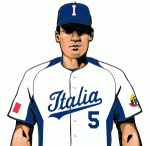
scouting report on the whole team, which I did and gave to the coaches. They watched a few of their games during their exhibition games and said it was ‘spot on’ as far as the scouting report. That’s what we used, and it actually came out well. We pitched well against them. We played great defense against them, and we came out victors.
Roberto: Once Team Italia’s manager Marco Mazzieri gave me his cell phone number, I felt compelled to do the same and gave him a scouting report on Team Canada. We all had to do our part.
Dan Serafini: Well, that’s it…exactly! We’re here to win. Right 
now, I’m not an American. I’m an Italian, and I’m here to beat Team USA today. I was there to beat Canada yesterday, and I was there the day before to beat Mexico. Granted I have friends from every team from all over the world, but right now I’m just Italian. I’m here to walk all over every other team.
Roberto: How proud are you to be Italian?
Dan Serafini: I am very proud to be Italian. It’s unfortunate because I have always had a strong Italian family growing up, but Italian heritage or history was never really taught.  I never learned Italian even though my father speaks Italian and both of my grandparents only spoke Italian. I just wasn’t brought up that way. Now doing more research about Italy and possibly thinking later in my career to maybe going to play in Italy for a little bit. I’m really interested in the Italian culture and to visit all around Europe. I’m looking forward to it. Italians are a well-educated culture to begin with. Everyone on our team speaks perfect English and perfect Italian. Some speak Spanish, Italian and English. I think they are just educated people. Unfortunately
I never learned Italian even though my father speaks Italian and both of my grandparents only spoke Italian. I just wasn’t brought up that way. Now doing more research about Italy and possibly thinking later in my career to maybe going to play in Italy for a little bit. I’m really interested in the Italian culture and to visit all around Europe. I’m looking forward to it. Italians are a well-educated culture to begin with. Everyone on our team speaks perfect English and perfect Italian. Some speak Spanish, Italian and English. I think they are just educated people. Unfortunately 
when you move to another country and are unable to speak their language fluently, you tend to get away from your native language.
I know when I played in Mexico my whole team spoke English. I didn’t have a chance to learn Spanish because people talked to me in English. So it’s not as diverse as you think. It’s a lot harder, even my wife can tell you it’s a lot harder to go there and learn a language because everyone is polite to you and tries to talk to you in your language to make you feel more comfortable. So we have a tendency to get lazy
and not try. But right now I listen to Italian tapes every night because
I want to try to learn Italian.
Roberto: That’s because everyone is trying to be hospitable 
and speak your native tongue?
Dan Serafini: Yes. I mean the Italians come right over here, and they all speak English right out of the gate. They don’t even try to speak Italian. They’re like: ‘No, we’re in America now–we’re speaking English.’ That’s what they do.
Roberto: How does having a coaching staff that includes future Hall of Famer Mike Piazza affect your approach to the game?
Dan Serafini: Mike is a great guy. Look at his story–coming from the 62nd round as a favor to his godfather Tommy Lasorda! Something ridiculous like that and becoming the best 
offensive catcher of all time…whatever his statistics are.
Being blessed enough to play against him and talk to him,
it’s a great experience. Just because we have one more
person with a ton of experience on our team. He has been
in the spotlight for what…16 seasons! You know, I’ve been
in the spotlight for seven. Grilli has been the spotlight for
eight. So it’s like we have plenty of experience. It’s nice to
have someone of that magnitude on our team helping us out.
Roberto: Mike Piazza could be doing something else with his time,
but his heart and soul are committed to Team Italia.
Dan Serafini: You’re right. It is…and we appreciate that! He could 
be doing anything with his time, and a lot of us could be but we’re all here together to represent Italy. We’re going to represent the right way this time.
Roberto: Thank you for your time today. I’m sure this story will be continued next time we get together to talk.
Dan Serafini: Yes, definitely…I’m looking forward to continuing it. I will answer any question that needs to be answered. It’s nice to be able to explain myself for a change, and hopefully one day people will look at me differently.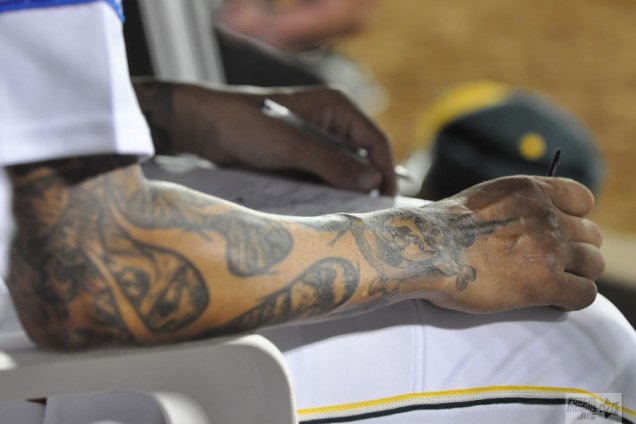
Angels and Mariners game ticket sales help bring Italian Americans at Bat to Orange County in 2014

you support our efforts to bring the Italian Americans at Bat Exhibition to Orange County.
a do-or-die attitude. Looking at the 2013 Angels Promotional Calendar, September 22nd is also Angel Team Photo and Fan Appreciation Day–when lucky fans have traditionally come home with loads of freebies including: vacations to five-star resorts, airline tickets, Angels Suites and Group Night tickets, amusement park passes, fitness club memberships, pool tables, BBQ grills, flatscreen TVs, BluRays, iPods, Flip Video Cams and even new tires. 


The Angels have had its share of Italian Americans on its roster in the past. Two prominent players who resonated in the hearts of hardcore Angels fans–Jim Fregosi and Tony Conigliaro–are included in the celebrated Italian Americans at Bat Exhibit. Fregosi became the Angels’ first budding star during the team’s initial eleven seasons of play from 1961-71. He led the American League in double plays twice, won the 1967 Gold Glove Award and set a franchise record with 70 career triples. Fregosi went on to manage the Angels at age 36 and guided the team to its first-ever postseason appearance in 1979. Conigliaro played for the Angels in 1971 but was never the same MLB All-Star after being hit by a tragic fastball thrown by Angels’ pitcher Jack Hamilton in 1967.




“Italian Americans at Bat” is a must-see before attending the 2013 WBC Finals in San Francisco

Americans have played baseball in the majors
since 1897? The San Francisco Bay Area produced many of baseball’s pioneers and originated the
sandlot playing field in the 1860s. In fact, the
earliest West Coast games were played downtown
on a sandlot where San Francisco City Hall stands today–nearly a century before the Giants and
Dodgers arrived in 1958. So it’s most appropriate Italian Americans at Bat: From Sand Lots
to the Major Leagues, a lavish documentary
exhibition of baseball memorabilia celebrating
the vast contributions of Italians Americans to
baseball, be on display for FREE in Reno, Nevada
at the magnificent Arte Italia through May 19th.
Located at 442 Flint Street, Arte Italia is open
Thursday through Sunday from noon to 5 PM
(www.arteitaliausa.com). The chronologically-
arranged exhibition was originally curated by
the Museo Italo Americano, the Italian American Museum of San Francisco, which explains why
there is a strong emphasis on Bay Area teams. However, it plays out perfectly for the climactic
finish to the showcase: an autographed cap
and jersey worn by 2012 World Champion
San Francisco Giants’ lefty starter Barry Zito,
who won the opener of the 2012 World Series.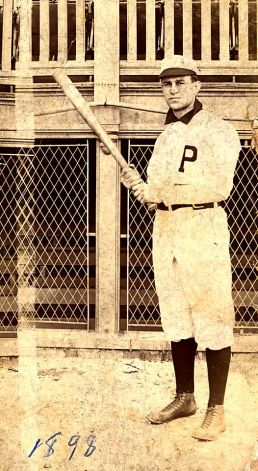
The exhibit’s co-curator, writer and historian Lawrence DiStasi of Bolinas, has loved the game since rooting for the New York Yankees as a child and playing baseball in the streets of Connecticut. In addition to writing all the text panels for the exhibition, DiStasi weaves together ideas, stories and statistics to depict the Italian American experience. There is a timeline of the years 1845 to 2012, which includes historical points of baseball and Italian immigration into the United States–and most importantly when those two histories intersect. The exhibition highlights several decades: the early days of redefining cultural stereotypes, transcending national barriers in the 30s and 40s, improbable triumphs of the 50s, 60s and 70s, the pride of the modern era, and a dominant presence in the Hall of Fame. Joe DiMaggio is the coveted star of the exhibition, and his 56-game hitting streak in 1941 is accented by DiStasi’s text panels which document each hit recorded in the “Dimag-o-Log” that SF Chronicle ran in the Sporting Green every day. Joe DiMaggio, along with his brothers–
Dom and Vince, Tony Lazzeri, Frank Crosetti, Babe Pinelli, Ernie Lombardi, Rugger Ardizoia, Billy Martin and Jim Fregosi are among the celebrated Italian American players with strong baseball roots to the Bay Area.
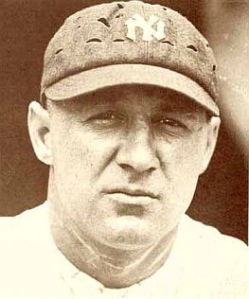
perhaps just as poignant is the profound
effect baseball has had on the Americanization of Italians. Faced with Italian-born parents who opposed his participation in pro baseball and regarded the sport as juvenile as well as not the wisest career choice–Ed Abbaticchio, probably the first person with an Italian surname to play professionally in 1897, was offered a hotel by his father if he would stop playing baseball. Despite the temptation, the ballplayer refused the bribe and pursued his passion for the game. However, some could not withstand the pressure and caved in to discriminatory bias and the constant ridicule sports writers bestowed upon Italian names. Among them was Francesco Pezzolo, who chose a California mining town as his name-sake and became Ping Bodie–the big league center fielder who played from 1911 to 1921.

slick with water. He never reeks of garlic and prefers chicken chow mein to spaghetti.” After Japan bombed Pearl Harbor on December 7, 1941, the United States declared war
After Japan bombed Pearl Harbor on December 7, 1941, the United States declared war
and began targeting those of German, Italian or Japanese descent. The Italians were the largest immigrant group in the U.S. at the time and about 600,000 of the country’s five million Italian immigrants who had not yet naturalized were forced to register as enemy aliens. Required to carry photo ID booklets and surrender flashlights, shortwave radios, guns, binoculars, cameras and other “contraband,” Italian enemy aliens were subject to FBI raids and nightly house arrest with a curfew from 8 PM to 6 AM. Noncitizens could not travel more than five miles from home without a permit. Lawrence DiStasi, author of “Una Storia Segreta: The Secret History of Italian American Evacuation and Internment during World War II”, reports that 10,000 Italians in California were evacuated, mostly from coastal areas and sites near power plants, dams and military installations. Ironically, the half-million Italian Americans serving in the U.S. armed forces at the time of the crackdown were the largest ethnic group in the military. Of the 257 Italians put in internment camps for up to two years, 90 were from California. Fishing boats were seized, and thousands of fishermen lost their jobs. In San Francisco, 1,500 people–including Joe DiMaggio’s parents–were idled. 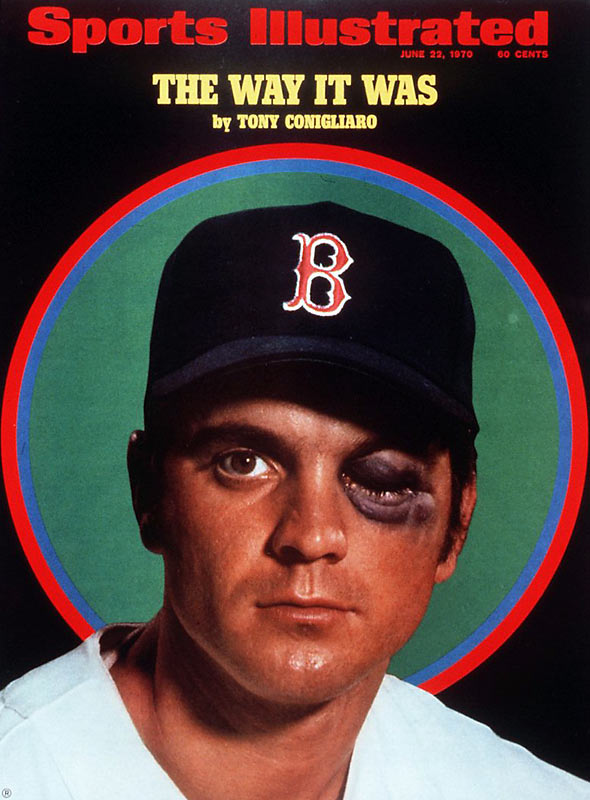 “The opportunity to showcase the adversity and accomplishments of legendary Italian American baseball players is one we welcome and relish,” said Kristen Avansino, President and Executive Director of Arte Italia. “For them, it was a way to integrate into the American way of life,” added Arte Italia Program Director Annie Turner. The exhibition brings home
“The opportunity to showcase the adversity and accomplishments of legendary Italian American baseball players is one we welcome and relish,” said Kristen Avansino, President and Executive Director of Arte Italia. “For them, it was a way to integrate into the American way of life,” added Arte Italia Program Director Annie Turner. The exhibition brings home
the message that baseball allowed Italian Americans to assimilate into popular culture:
“This most American of sports became a quick way to counter that negative immigrant identity as an outsider.” Phil Rizzuto, Yogi Berra, Rocky Colavito, Roy Campenella, Ron
Santo, Carl Furillo, Joe Caragiola, Sal Maglie, Tony Conigliaro, Tommy Lasorda, Joe Torre, Tony La Russa, Mike Scioscia, Ken Caminiti, Craig Biggio, Mike Piazza, Mike Napoli and
former Commissioner of Major League Baseball Bart Giamatti are just some of the legendary Italian American baseball ambassadors that have etched their names into U.S. sports history forever. Italian Americans at Bat: From Sand Lots to the Major League pays tribute to their contributions, and those of over 400 others who have left their unique imprint
on the game. Currently on display in Arte Italia’s upstairs Michelangelo and Leonardo
da Vinci galleries are vintage jerseys, a plethora of memorabilia–including classic baseball cards and autographed baseballs, press clippings of career milestones, an interactive
touch screen computer database featuring memoirs, stats, and career highlights of
Italian American players and 14 World Series Championship managers as well as
over 200 archival photographs of some of the greatest moments in baseball history.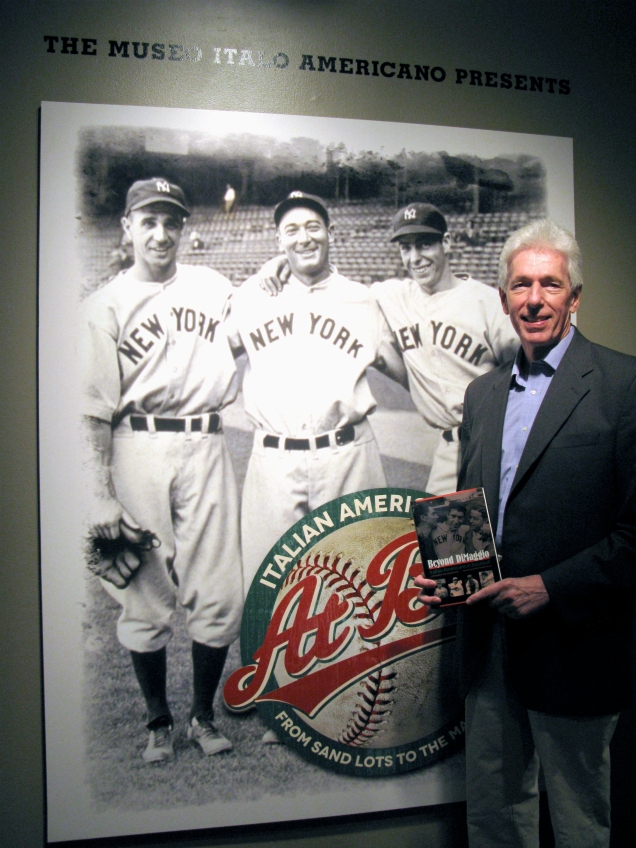
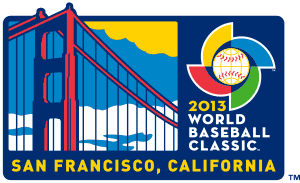
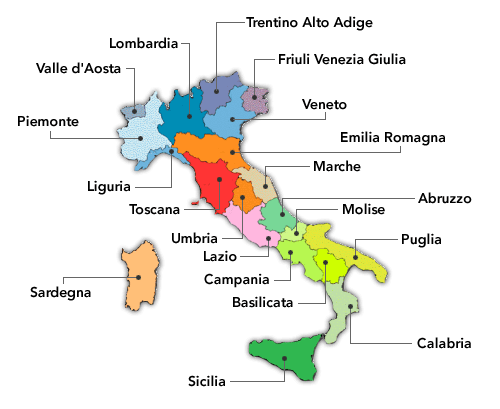
3,000 means a lot more than another oil change
 It’s been 40 years since Roberto Clemente joined MLB’s elite 3000 hit club on September 30, 1972 after hitting a double off Mets’ lefty Jon Matlack at Three Rivers Stadium in Pittsburgh, PA.
It’s been 40 years since Roberto Clemente joined MLB’s elite 3000 hit club on September 30, 1972 after hitting a double off Mets’ lefty Jon Matlack at Three Rivers Stadium in Pittsburgh, PA.

San Juan Senadores Winter League team were personally invited to visit Clemente at his home in Puerto Rico. Currently working as a Houston Astros Minor League pitching coordinator, Matlack recalled when Clemente gathered everyone in his trophy room to talk baseball: “I thought that was pretty classy on his part. He was very personable, showed us his trophy room and memorabilia and spent
a lot of time talking about hitting. Every part of me
was awe-struck.”
 Matlack reminisced: “This bat was leaning in a corner. Somebody asked about hitting, and he picked up the bat to demonstrate. I remember thinking, ‘That’s a big bat,’ and
Matlack reminisced: “This bat was leaning in a corner. Somebody asked about hitting, and he picked up the bat to demonstrate. I remember thinking, ‘That’s a big bat,’ and
I asked about it. He said it had the maximum dimensions. He set it back down, and when everybody sort of moved on, I grabbed hold of it. I could barely pick it up. It led me to believe how strong this guy really was.” Clemente’s strength was tested when Matlack faced “The Great One” six times prior to their final reunion in the fourth inning on September 30, 1972. Clemente was hitless off him with one walk in previous matchups. Matlack’s strategy this at-bat was to avoid a mistake on the inner half, while hoping Clemente would take a quality strike on the outside corner. On a 2-2 pitch, the lefty spun a curveball on the outside.
Matlack said, “As it left my hand,
I was a little upset, because I realized this thing’s not going to make the strike zone. But he took that long stride, kept himself back and pulled it off the left-center-field wall for a double.” Matlack did not recognize what had happened until the second-base umpire, Doug Harvey, presented the ball to Clemente. Jim Fregosi, the Mets’ shortstop who retrieved it, remembered Clemente’s rather nonchalant reaction. He raised his helmet briefly to the fans. Fregosi said, “He was pretty cool about everything he did. That’s how he was.” Fregosi believed Clemente understood the importance of #3000.